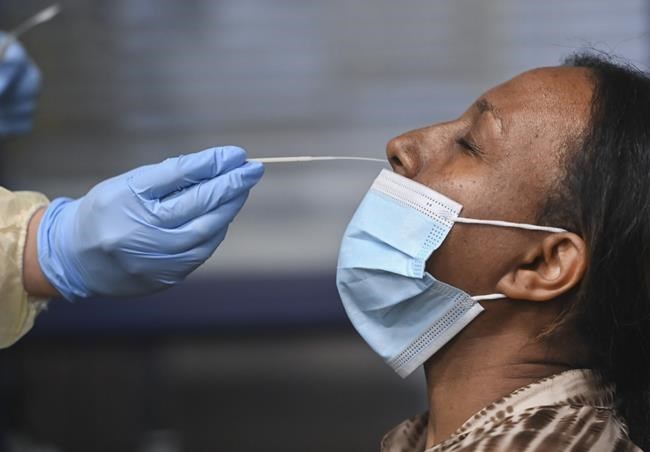TORONTO — A new study finds long COVID significantly increased doctor visits, home-care needs and hospitalizations for a small proportion of Ontarians infected early in the pandemic.
Researchers say that doesn‚Äôt bode well for a health-care system that was further slammed by an Omicron surge earlier this year and is now bracing for an expected fall and winter wave.¬Ý
"Many of us are concerned about how we're going to provide care for those ... with cancer and heart attacks and strokes, and also try to make up for the backlog of care that couldn't be managed over the past couple of years," says co-author and emergency physician Dr. Candace McNaughton.
The study, published Monday in the Canadian Medical Association Journal, looked at the health-care usage of 531,702 Ontario residents who took PCR tests between Jan. 1, 2020 and March 31, 2021.¬Ý
Researchers focused on a relatively small group of Ontarians who sought COVID-19 care eight weeks or more after diagnosis. Their findings suggest this cohort on average spent 50 per cent more days in hospital than their counterparts who weren't infected.
At the highest end, the analysis suggests one per cent of women spent six and a half more days in hospital and received 28 more home-care visits per year than otherwise. One per cent of men had about nine more days in hospital but fewer home care needs.
Even though one per cent is a small proportion, this subset's outsized demand for increased medical attention has strained resources that have only become more scarce this year, McNaughton says.
She pointed to a significant jump in COVID-19 infections since the study was conducted, as well as critical staffing shortages that have prolonged stays in emergency departments and overwhelmed pediatric hospitals.¬Ý
The report concludes with calls for substantial health-care restructuring and investment.
“When we started our analysis, it was just under a year ago when things looked like they were winding down. And we really hoped at the time that this would be an entirely academic exercise,” McNaughton says.
“Canada had done a fantastic job of containing viral spread, and so there weren't really — compared to many other countries — that many individuals who were infected. But about a year later, more than half of Canadians have been infected and so one per cent of half of the country is quite a big deal.”
According to the COVID-19 Immunity Task Force, the more infectious Omicron variants sent cases soaring through much of 2022 to infect 62 per cent of Canadians by September — up from just five per cent in August 2021 before the Delta wave.
McNaughton says it's not clear to what extent the current crunch facing many hospitals is affected by long COVID cases but she has seen patients "who are spending 12, 16, 18 hours in the emergency department with complications from a prior COVID infection." With PCR tests no longer readily available, she said it's difficult to confirm COVID infections now.
So much of long COVID also continues to confound clinicians, she adds.
"Patients are often having to go to multiple physicians to try to figure out what's going on. And once they do get diagnosed with long COVID, we don't have a treatment for it that we know to be effective. So they find themselves trying a bunch of different things," she says.
"For someone who's already not doing well, feeling quite poorly, it can be a tremendous burden for them and their families to try to navigate the health-care system."
She says the study’s findings also make a good argument for a return of indoor mask mandates, especially as flu season also approaches.
Prior infection doesn't guarantee that you won't catch COVID-19 again, she says, and even mild cases can lead to so-called long COVID, most often defined by symptoms lasting more than three months.¬Ý
McNaughton says she‚Äôd like to see government invest more in the hiring and retention of nurses, as well as improve indoor ventilation and resume COVID-19 surveillance measures to better communicate infection risks to the public.¬Ý
"I'm hopeful that individuals and governments and leaders in health care can look at this information and plan ahead for how they're going to utilize the available resources," says McNaughton, a doctor at Toronto’s Sunnybrook Research Institute.
"Where do we put our effort and time and workforce and money looking forward within the competing landscape?"
This report by The Canadian Press was first published Oct. 17, 2022.
Cassandra Szklarski, The Canadian Press




